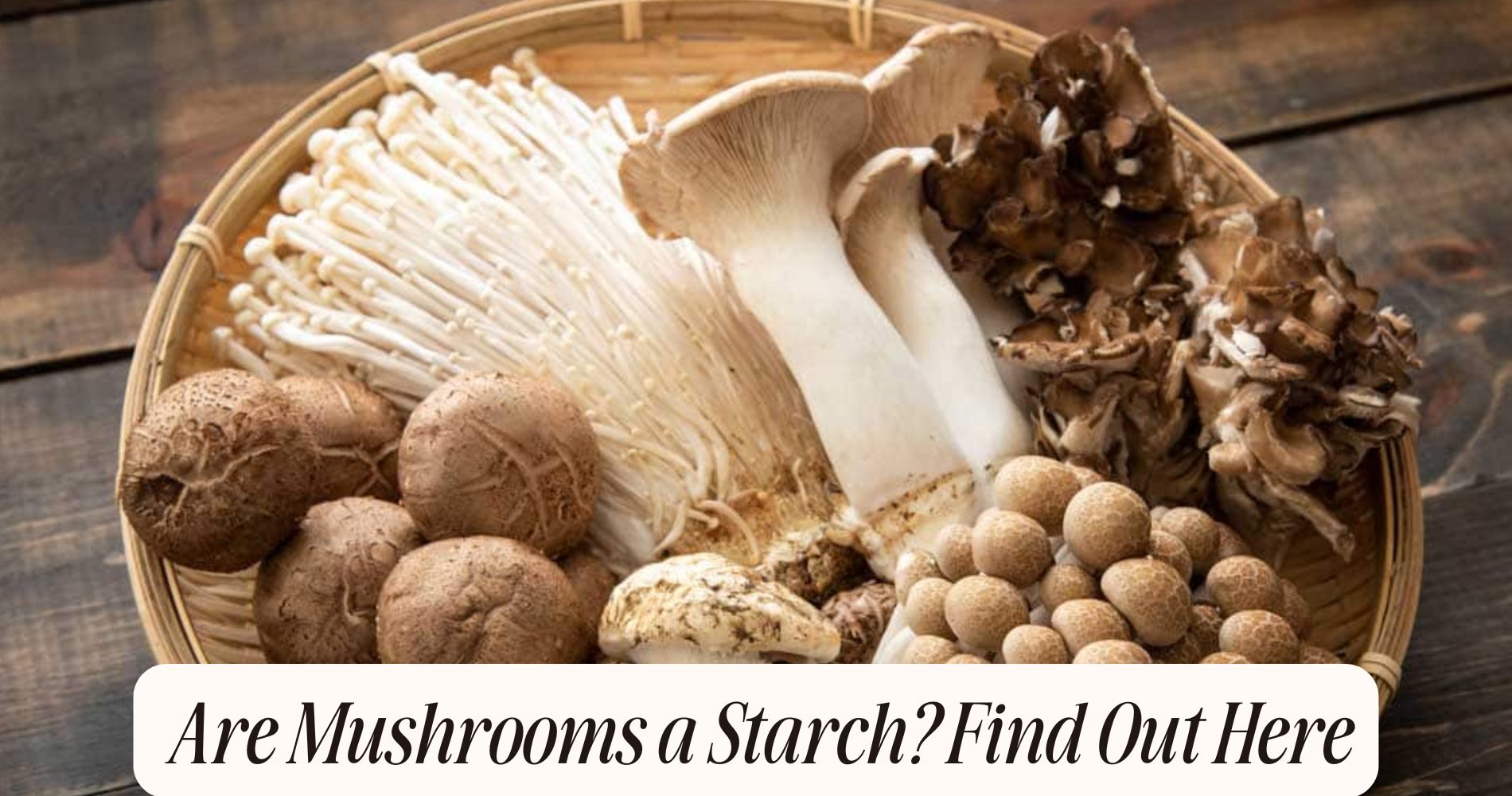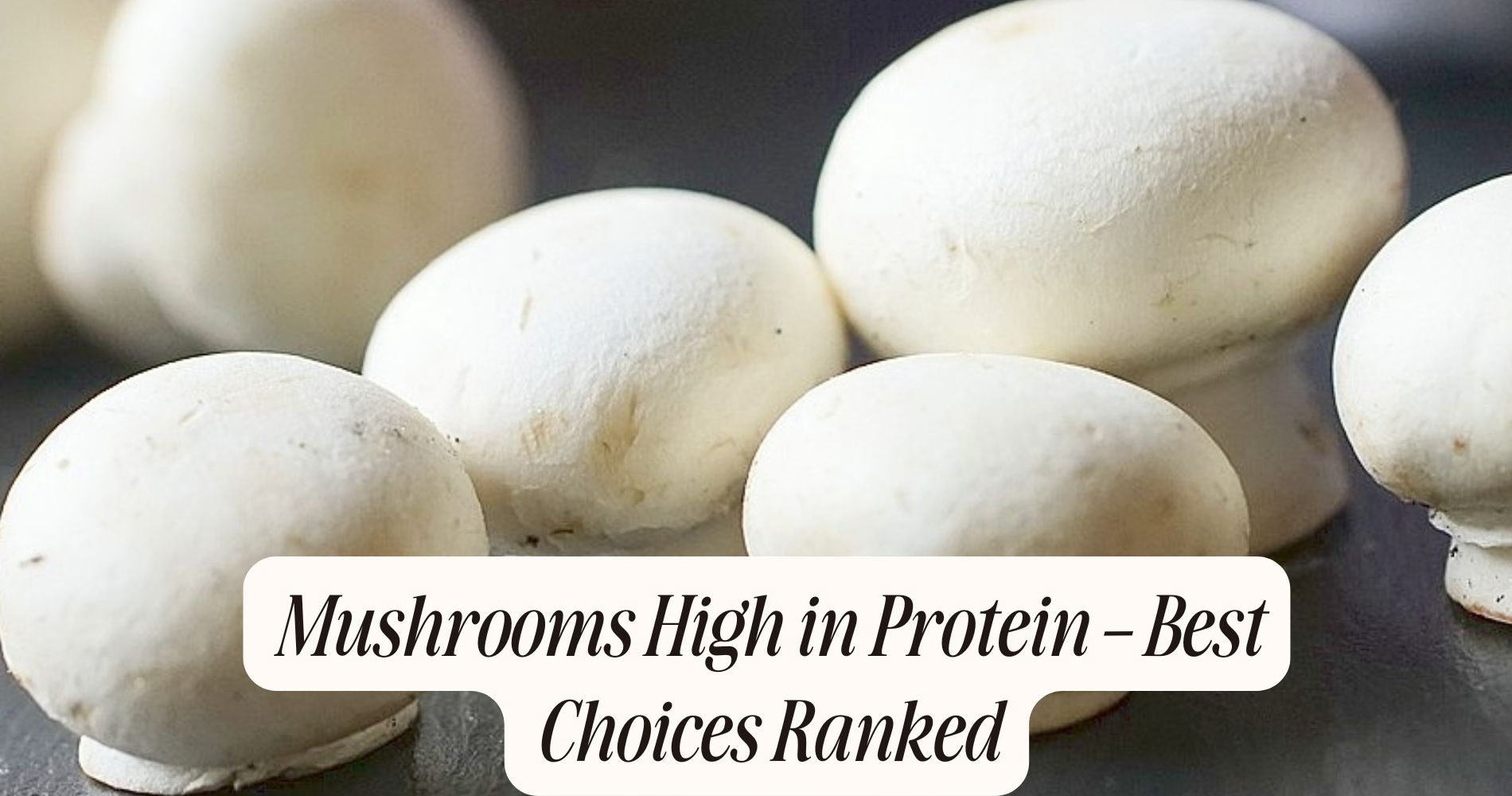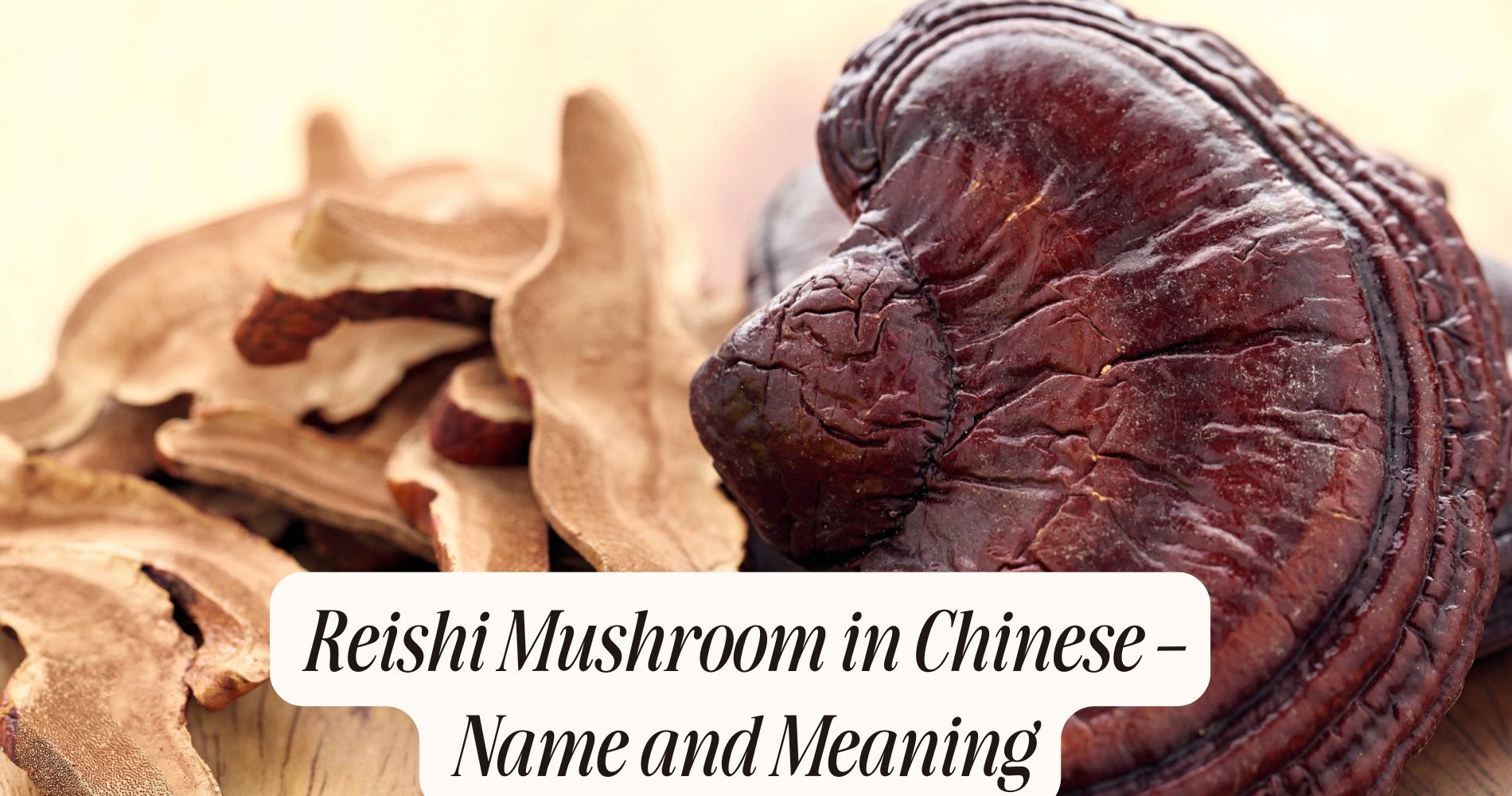
Are Mushrooms a Starch? Find Out Here
Are mushrooms a starch? No, mushrooms aren’t a starch. Instead, you’ll find they’re a low-carb food packed with fiber, vitamins like B2, B3, and D, as well as unique antioxidants that help protect your cells. Unlike starchy foods such as potatoes or rice, mushrooms don’t contain significant starch and have only 2-3 grams of carbohydrates per cup. They’re great for low-carb diets and supporting your immune and heart health. Want to know how they stack up to other foods? Keep going.
Understanding What Starch Is
Although you might hear the term often, starch is a specific type of carbohydrate that your body breaks down into glucose for energy. Starch is found mainly in foods like potatoes, rice, wheat, and corn.
You won’t find high starch content in mushrooms, even though they’re often used as hearty meat substitutes thanks to their savory mushroom flavor profiles. Instead, mushrooms contain other types of carbohydrates such as fiber and natural sugars.
When you examine mushroom cultivation methods, you’ll notice that growers focus on factors like substrate quality and moisture, not starch content, because mushrooms simply don’t store energy as starch.
Understanding this difference helps you choose foods based on your carbohydrate needs, whether you’re looking for a starchy side or a low-starch, nutrient-rich option.
The Nutritional Makeup of Mushrooms
Mushrooms stand out nutritionally because they provide a unique mix of nutrients without the high starch content found in many other plant foods. When you eat mushrooms, you’re consuming a food rich in vitamins like B2 (riboflavin), B3 (niacin), and D, which are essential for metabolism and immune health.
The vitamin profiles of mushrooms are especially notable since they supply nutrients that some plant foods lack. In addition, mushrooms are low in calories, fat, and carbohydrates, making them a smart choice if you’re watching your intake.

They also contain fungal antioxidants such as ergothioneine and glutathione, compounds that protect your cells from oxidative stress. Fiber, especially beta-glucans, adds to their health benefits, supporting digestion and heart health without adding starch.
Comparing Mushrooms to Common Starchy Foods
When you compare mushrooms to common starchy foods like potatoes, rice, or corn, their nutritional differences become clear. Starchy foods typically provide a significant amount of carbohydrates, especially in the form of starch, which serves as a major energy source.
Mushrooms, on the other hand, are much lower in carbohydrates and don’t contain appreciable starch. Instead, they offer fiber, vitamins, and minerals, making them a lighter option.
In terms of culinary uses, you’ll find that mushrooms’ savory, umami-rich flavor stands out, while starchy foods tend to have mild, neutral tastes that absorb other ingredients well.
You can use mushrooms to add depth to dishes without increasing carbohydrate content. Their unique mushroom flavor and texture make them versatile, but they’re not nutritional substitutes for starches.
Carbohydrate Content in Mushrooms
Curious about how many carbs mushrooms actually contain? You’ll be glad to know that mushrooms are a low-carbohydrate food. On average, one cup of raw, sliced white mushrooms has just about 2-3 grams of total carbohydrates.
Unlike potatoes or rice, mushrooms don’t provide starch; instead, their carbs come mainly from natural sugars and some fibers. These low levels make mushrooms suitable for low-carb diets and those watching blood sugar.

Mushroom cultivation techniques, such as substrate selection and growing environment, can slightly influence carbohydrate levels, but the changes are minimal. These techniques, however, play a bigger role in shaping mushroom flavor profiles, which vary widely between varieties.
Whether you prefer the mild taste of button mushrooms or the earthiness of shiitake, you’re still getting a low-carb food.
Fiber and Other Nutrients Found in Mushrooms
Beyond their low carbohydrate content, you’ll also benefit from the fiber and array of nutrients mushrooms provide. Mushrooms offer both soluble and insoluble fiber, such as beta-glucans and chitin, which support digestive health and help you feel full. These fibers don’t just aid your gut—they can also contribute to healthy cholesterol levels, according to multiple studies.
When it comes to vitamins and minerals, you’ll get B vitamins like riboflavin, niacin, and pantothenic acid, plus minerals such as selenium, potassium, and copper. Mushroom flavor varies by variety and is influenced by mushroom cultivation methods, which can also impact nutrient content.
Including mushrooms in your diet means you’re adding a nutrient-dense food that brings both unique taste and substantial health benefits.
How Mushrooms Fit Into Low-Carb Diets
Although many carbohydrate-rich foods are off-limits on low-carb diets, mushrooms stand out as a versatile exception. You’ll find that most varieties contain minimal digestible carbohydrates, thanks to their unique composition developed through careful mushroom cultivation.
For example, one cup of sliced white mushrooms typically has less than 2 grams of net carbs, making them easy to fit into your daily macros. Their low starch content means they won’t cause spikes in blood sugar, which is ideal if you’re watching your carb intake.

Plus, mushrooms offer a range of flavor profiles—from mild button mushrooms to earthy portobellos—that let you add depth to meals without extra carbs. By using mushrooms creatively, you can enjoy diverse textures and tastes while sticking to your low-carb plan.
Health Benefits Unique to Mushrooms
Mushrooms don’t just fit seamlessly into a low-carb diet—they also offer health benefits you won’t find in typical starchy foods. Unlike potatoes or rice, mushrooms contain unique fungal antioxidants such as ergothioneine and glutathione. These compounds help protect your cells from oxidative stress, which is linked to aging and chronic diseases.
You’ll also benefit from beta-glucans found in mushrooms, which play a key role in immune modulation. Beta-glucans stimulate your immune system, enhancing your body’s defense against infections without overstimulating it.
Mushrooms are naturally low in calories and rich in B vitamins, selenium, copper, and potassium, supporting cellular energy and nerve function. By adding mushrooms to your diet, you gain nutrients and protective compounds that starchy foods simply can’t provide.
Tips for Incorporating Mushrooms Into Your Meals
Whether you’re aiming to boost nutrition or simply add variety to your meals, it’s easy to make mushrooms a regular part of your diet. Start by adding sliced mushrooms to salads, stir-fries, or omelets for extra fiber, B-vitamins, and antioxidants.
You can sauté them with garlic for a quick side or blend them into soups and sauces for a richer texture without extra calories. Thanks to sustainable farming and advanced mushroom cultivation techniques, you’ll find a wide range of fresh and dried varieties year-round.
Try swapping mushrooms for meat in tacos or burgers to cut saturated fat while increasing nutrients like selenium and potassium. Experiment with different types—such as shiitake, cremini, or portobello—to maximize both flavor and nutritional benefits.
Smart Nutrition Beyond Starch: SUPER MUSHROOM GUMMIES
Now that you know the answer to are mushrooms a starch, take your nutrition further with Well Gummies' SUPER MUSHROOM GUMMIES! These low-starch, vegan-friendly chewables combine the benefits of 10 functional mushrooms into one convenient and delicious wild berry-flavored gummy. Whether you're aiming for brain fuel, immune support, or steady energy, these gummies deliver it all—without added carbs or prep time. No jitters, no crash—just balanced, plant-based wellness in every bite. Make mushroom nutrition easy and enjoyable with Well Gummies!
Frequently Asked Questions
Can Mushrooms Cause Allergic Reactions in Some People?
Yes, you can experience a mushroom allergy, though it's rare. Allergic symptoms may include hives, swelling, or difficulty breathing. Mushrooms contain proteins that can trigger your immune system if you're sensitive, so monitor your reactions carefully.
Are There Poisonous Varieties of Mushrooms to Avoid?
You should know there are poisonous varieties of mushrooms that aren't safe for consumption. Scientific evidence shows some contain toxins harmful to humans. Always properly identify mushrooms, as only certain types offer nutrient benefits and are safe for eating.
How Should Mushrooms Be Stored to Maintain Freshness?
To maximize freshness preservation, follow these storage tips: store mushrooms in a paper bag in your refrigerator. This allows excess moisture to escape, preventing spoilage and nutrient loss. Don’t wash them until you’re ready to use them.
Do Mushrooms Interact With Any Medications?
You should know that some mushrooms, especially medicinal varieties, can cause medication interactions. Always check for mushroom safety if you're on blood thinners or diabetes drugs, as certain compounds may increase or decrease your medication's effectiveness.
Are Organic Mushrooms Better Than Conventionally Grown Ones?
When you compare nutrition, studies show little difference between organic and conventionally grown mushrooms. However, organic cultivation methods use fewer synthetic pesticides, which may appeal to you if you’re concerned about chemical exposure rather than nutrition comparison.
Conclusion
Mushrooms aren’t a starch—they’re low in carbohydrates and rich in fiber, vitamins, and minerals. Unlike potatoes or grains, mushrooms don’t spike your blood sugar, making them a smart choice for low-carb and nutrient-focused diets. They offer unique health benefits, like antioxidants and immune support, that starchy foods can’t match. So, if you’re looking for a versatile, nutrient-dense addition to your meals, mushrooms are a clear winner. Try them in your next dish!




